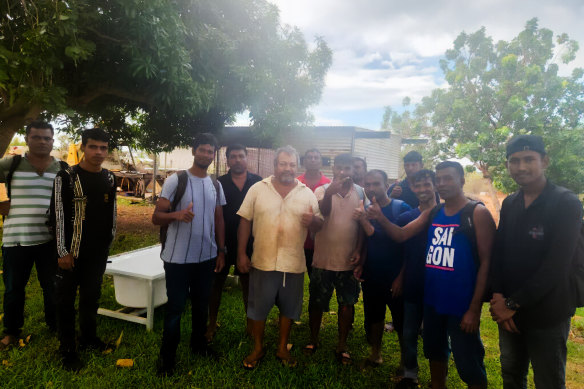
Another known transit point to Australia’s north-west coast is the province of West Java. As recently as late November, police there arrested four Bangladeshi nationals who had allegedly arranged a boat to Australia from the coastal town of Citepus.
The asylum seekers and their crew were seemingly willing to brave the summer monsoon, which can whip up dangerous swells in the region from October through February. According to Slamet Ari Nugroho, a coordinator with the Indonesia Traditional Fishermen Association, the conditions could be challenging even for Australian patrol boats.
“Maybe this situation is used by the illegal boats trying to seek asylum because they know when authorities are paying less attention [and] not going out to the sea,” he said. “They [asylum seekers] risk their lives, but they still do it because at that time the supervision is lax.”
He said Indonesian authorities would generally take shelter during large seas. Yuhanis Antara, a spokesman for the Indonesian Coast Guard, said crews closely monitored deteriorating conditions.
“I don’t think we reduce the patrols,” he said. “If it is only two to three-metre [waves], we are still able to patrol because a coast guard vessel is 80 metres.”
However, any swell four metres and above was a captain’s call, he said.

One of the groups that arrived in Western Australia on February 17 at the Pender Bay campsite with its owner in the centre. The men were given food and basic medical care before police were alerted.
Australian vessels, which range between 40 metres and 111 metres, are another matter. This masthead asked Australian Border Force if the monsoon – or assumption about illegal boats not daring the conditions – were factors in patrol decisions and target locations.
It did not answer the questions, but said agents assessed safety standards, while the prioritisation of resources was based on evidence and intelligence.
The ABF confirmed in Senate estimates last year that total aerial surveillance decreased by 14 per cent compared to the previous year. Officials attributed this to a difficulty in recruiting pilots. There were also 6 per cent fewer maritime patrol days, largely because of Australia’s ageing fleet and maintenance issues.
Australia and Indonesia share an expansive maritime boundary, and Slamet from the fishers’ association said there were more Indonesian fishing boats operating illegally in Australian waters than there were patrol crews.
Loading
“It is not only about the monsoon. There is no way that they are able to capture each illegal boat,” he said.
Patar from West Timor said it was usually too expensive and complicated for smugglers to drop off their human cargo and attempt to return the boat to Indonesia. “From our experience, they have written off the cost of the boat taking them to Australia,” he said.
In previous missions, crews had sailed into the path of Australian Border Force agents who would take the asylum seekers for processing and destroy the boats.
What happened to the boats that were used to reach Australia this time around is unclear, raising concerns people smugglers were using more advanced ships and making it back to Indonesia without punishment.
Get a note directly from our foreign correspondents on what’s making headlines around the world. Sign up for the weekly What in the World newsletter here.









 Add Category
Add Category